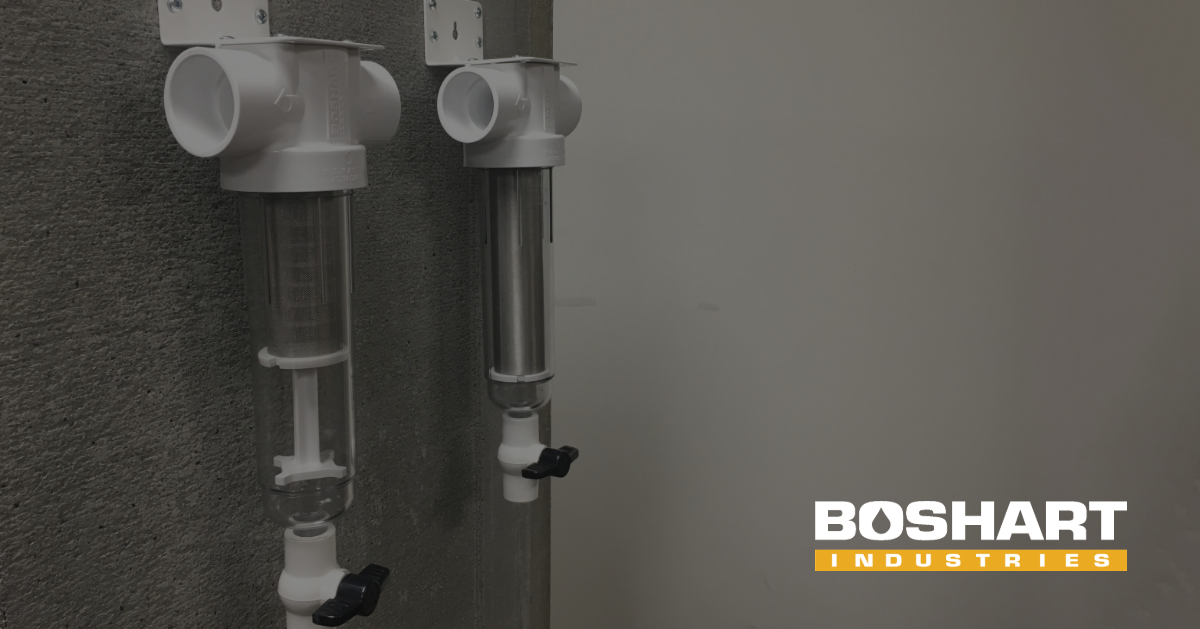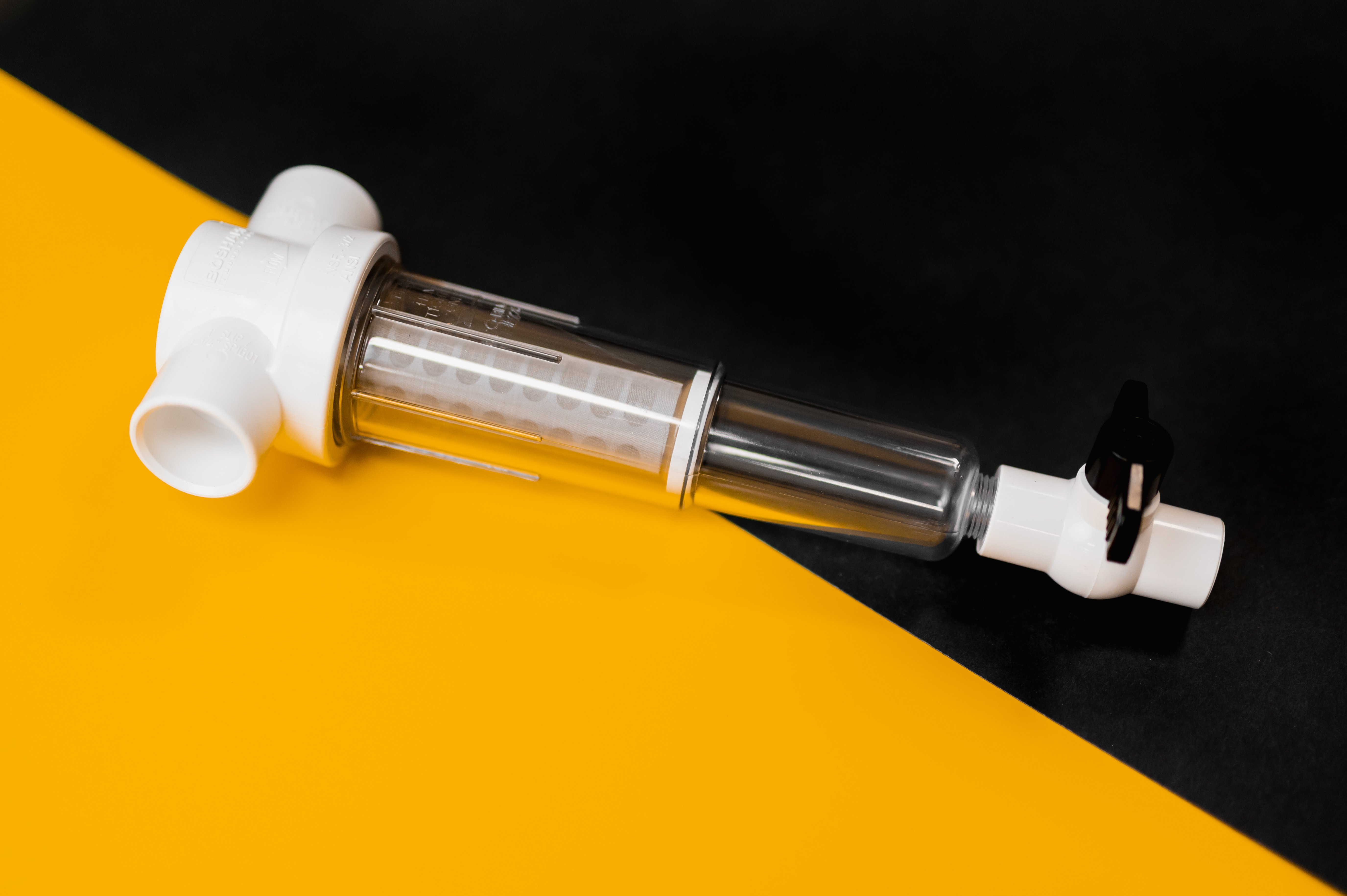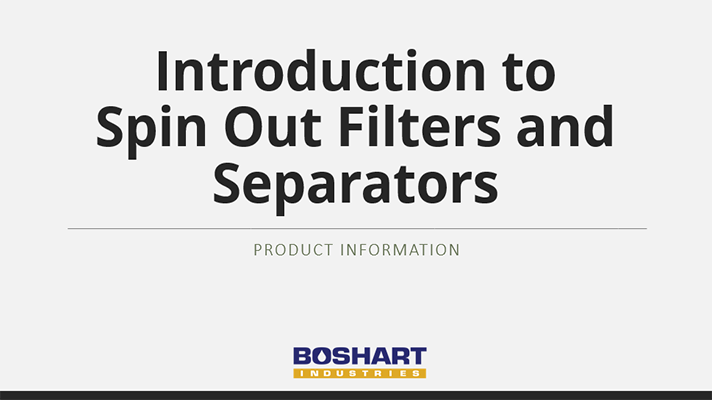At first glance, a traditional filter and a spin out sediment filter look different, but are there other distinctions? Now that we know the different components of each, we can explore the differences.
Both filters are designed to be used to eliminate sediment like dirt, silt and scale from your water. But there are some reasons why you would want to include a traditional filter over a spin out sediment filter, and vice versa.
In this blog, we explain the differences between a traditional sediment filter and a spin out sediment filter and then go through why you would need a spin out sediment filter vs a spin out sediment separator.
Haven't read the Components of a Traditional Water Filter & Spin Out Sediment Filter Blog? Read it here!
What is the Difference Between a Traditional Sediment Filter & Spin Out Sediment Filter or Separator?
First off, both a traditional sediment filter and spin out sediment filter or separator have the same purpose as they both have the ability to remove sediment from your water. There are some circumstances where you would want one over the other and in some cases, you could potentially require both types, in series.
Every filtration system includes a traditional sediment water filter, but not every filtration setup will incorporate a spin out type sediment filter or separator.
Traditional Sediment Filter 
A traditional sediment filter includes cartridges like spun poly, pleated and string wound. They are ideal for removing sediment like sand, silt, scale or rust from your water as long as the sediment load is not too large that the cartridge doesn't get clogged. If the cartridge becomes clogged, the water flow and pressure would become severely reduced, requiring you to prematurely replace the cartridge.
 Spin Out Filter
Spin Out Filter
Spin out filters and separators can be used on their own, depending on the size of the particulate you need to remove. However, they have limitations when it comes to the particulate size. See chart for a closer look.
.png?width=1208&name=Mesh%20%20Micron2%20(004).png)
Spin out sediment filters and separators both use a stainless steel mesh filter element which allows you to remove, rinse it off and put it back, elongating its life span and saving you cost and labor. These cartridges are ideal for heavy sediment loads, typically from water wells that produce significant volumes of sediment, including applications that involve pumping water from reservoirs, lakes and streams.
Commonly, you will see a spin out filter being installed in series with a traditional 10, 5 or lower micron rated sediment filter cartridge as a finishing filter. Another difference between a traditional filter and a spin out filter is the ability to purge the filter housing. At the bottom of the spin out sediment filter or separator is a PVC ball valve that is used to flush the sediment out without having to disassemble the filter. Removing the sediment prevents any clogging, with the goal of it lasting the six month period before needing replaced for bacteria reasons.
What is the Difference Between a Spin Out Sediment Filter & Spin Out Separator Filter?


Right: Sediment Filter Left: Sediment Separator
As seen in the picture above, the only difference between a spin out sediment filter and a separator is the size of the sediment chamber where the sediment can settle while the water above the reservoir rapidly spins around the filter, separating the sediment from the water. Using centrifugal force, the water pushes the sediment to the bottom of the bowl, if you have a lot of sediment, the spin out separator would be a good option as it has more room.
In Conclusion:
Although both a traditional sediment filter and a spin out sediment filter perform the same, they have differences that should be taken into account. Every filtration system includes a traditional sediment type water filter, but not every filtration system incorporates a spin out sediment filter or separator.
Have further questions about this subject?

Head over to Boshart's Knowledge Base: technical product information, guidelines, and more.





SHARE